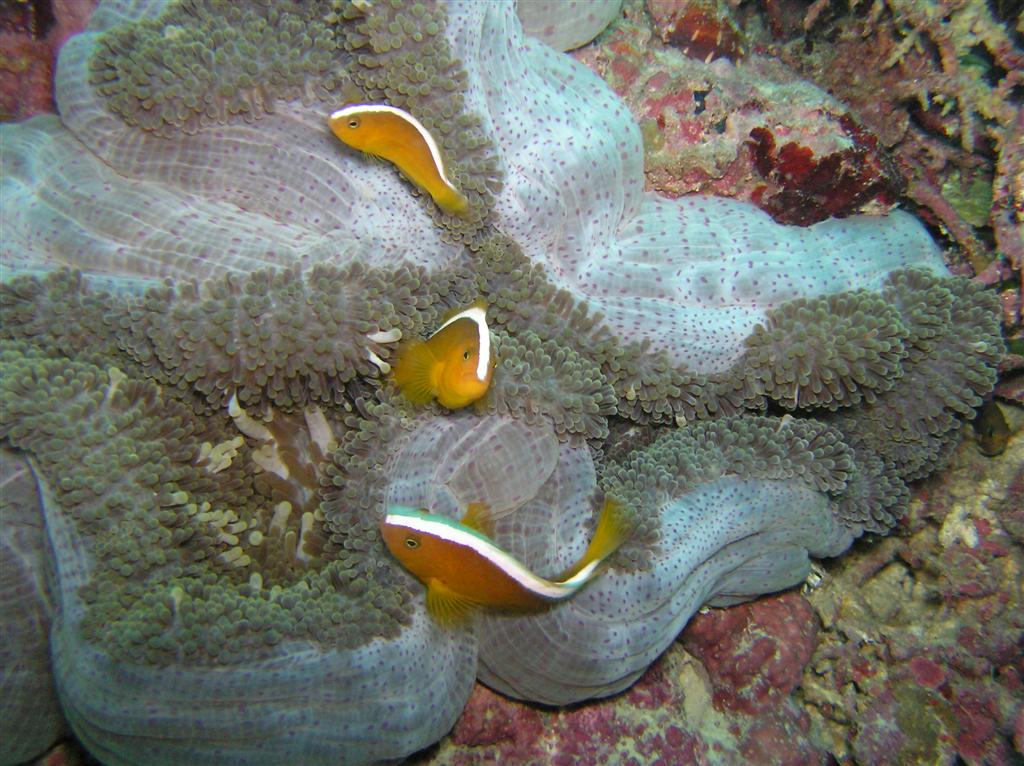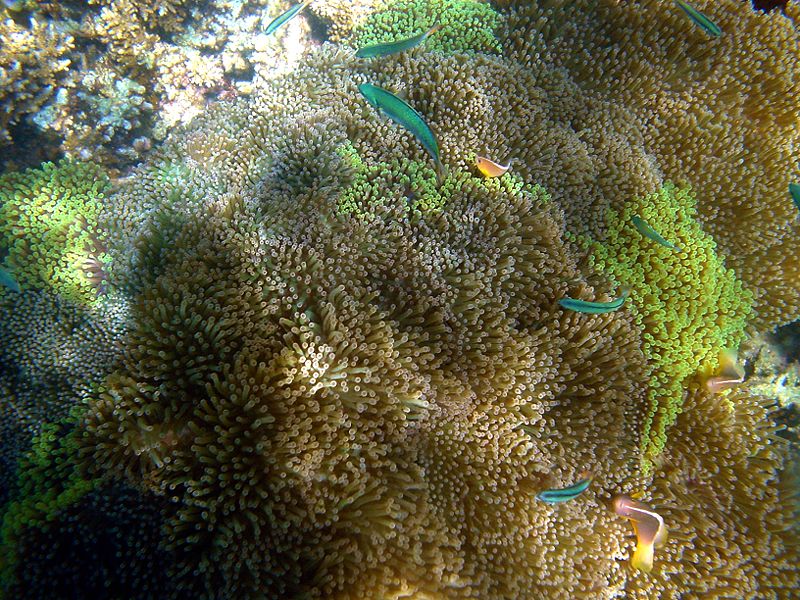I don’t recall ever being stung by a sea anemone, but I’ve heard it can be pretty nasty. Still, anemones are fascinating creatures, and they look quite cool with all their tentacles waving about with the currents. The only anemone I’ve written about was the Cloak Anemone, which forms a partnership with hermit crabs. Today’s anemone is an entirely different type, choosing to live a more sedentary life.

Image by Frédéric Ducarme, CC BY-SA 4.0, via Wikimedia Commons
Rocky, coral areas are the preferred habitat for Merten’s carpet anemones, which live in tropical waters in the Indo-Pacific Oceans. They don’t like to live in very deep water, usually hanging out around depths of one to twenty metres. Merten’s anemones like rocky areas because these allow the anemones to hide their bodies in crevices, only exposing their mouths to the dangers of the open ocean.
Merten’s carpet anemones are the largest sea anemones in the world. They can reach staggering proportions of over one metre in diameter. That’s a little ridiculous for a sea anemone. Other than their size, Merten’s anemones are a bit boring, having no bright fun colours that other anemones flaunt. I guess these guys decided to forgo colourful creativity in favour of getting really, really large. They are different shades of green, yellow or cream.
The tentacles of Merten’s anemones are also fairly unimpressive. They are relatively short, only being about a centimetre or two long. The anemones use these tentacles for protection from predators. I know, it’s weird that things would want to eat an anemone, but there are animals that try. Predators of Merten’s carpet anemones include other anemones, sea stars, and some types of fish.

These sea anemones can be aggressive, but they also share their large bodies with a number of different organisms. Some of the most visible of them are anemonefish and damselfish, which hide in the anemones’ tentacles for protection. Other, less obvious partners are the symbiotic zooxanthellae that the anemones require to survive. These algae provide the anemones with most of their food, and in exchange are protected by the anemones’ tentacles.
Some anemones look really neat, but they are a little terrifying thanks to all those nasty tentacles they have. I cannot even imagine seeing a meter-wide anemone. I think something like that could haunt my dreams, so it’s a good thing I have no intention of diving in any ocean, let alone the Indo-Pacific.
Cover image by Brocken Inaglory, CC BY-SA 3.0, via Wikimedia Commons
